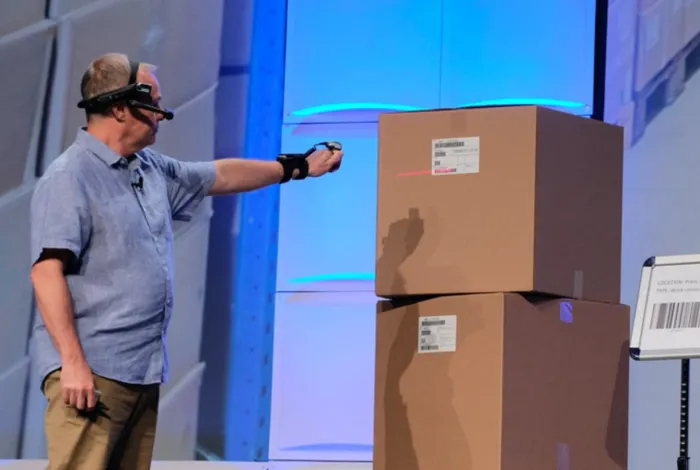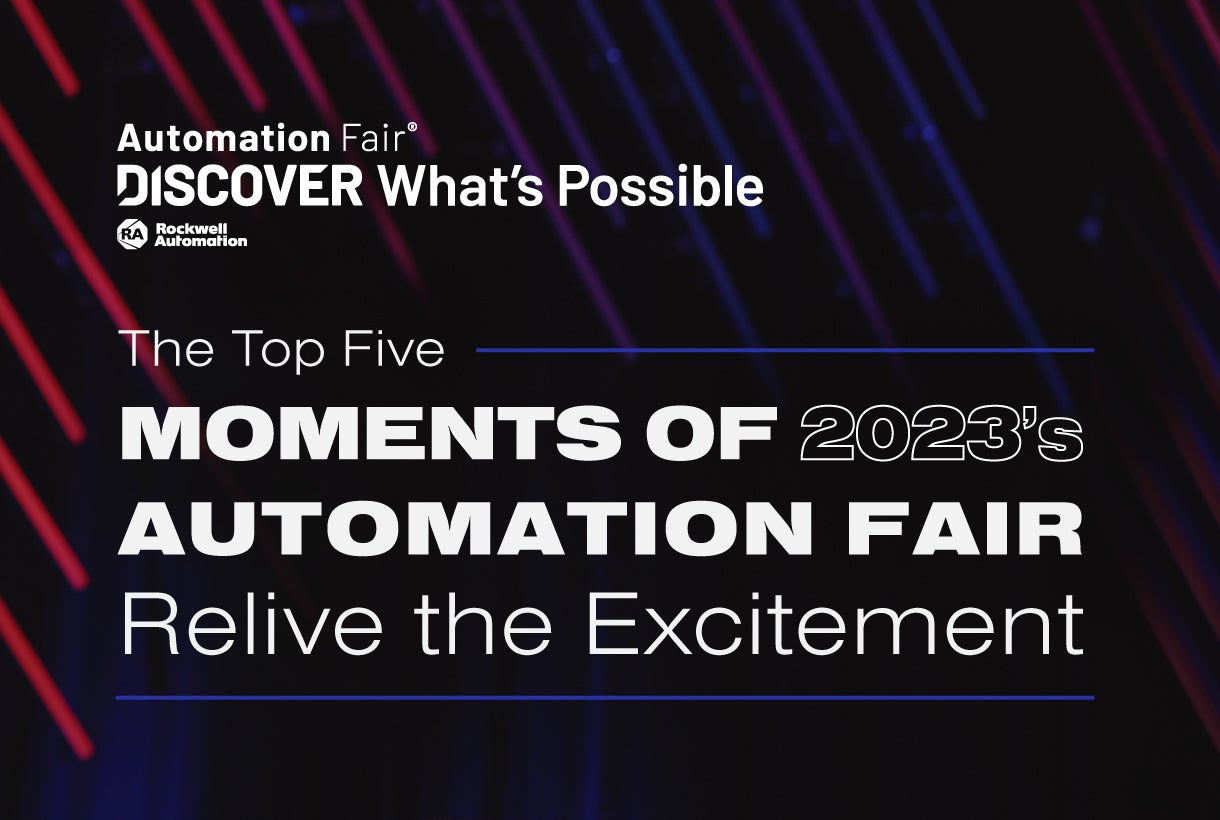

Now Available!
Get your copy of the 7th Annual State of Smart Manufacturing and hear from 300+ manufacturers in this new survey report!
Subscribe to Our Blog
For a monthly digest of expert insights, data points, and tips like the ones in this article.

As Jerry Foster, Plex CTO, sees it, “all in on innovation today will own the competition tomorrow.” However, innovation isn’t necessarily the first thing that comes to mind when thinking about manufacturing. We tend to think more about technology companies as being innovative – or companies that have introduced new business models such as Amazon, Uber or Airbnb. But if you look closely at the history of manufacturing, the industry has always been innovative – from the streamlined assembly line to use of robotics and mobility on the shop floor to just-in-time supply chain management, and beyond. In today’s PowerPlex 2018 Innovation Keynote, Foster and members of the Plex customer/partner ecosystem explore many types of innovation in manufacturing. We’ll look more closely at several of these examples, but first, let’s look at a bit of background on innovation at Plex.
Plex Innovation
Plex has been on the forefront of innovation for years. As far back as 1993, Plex was looking at connecting mobile devices on the shop floor. These weren’t the typical hand-held devices we have today but rather large military grade devices with limited functionality. In 2001, Plex was the first ERP solution available in the cloud, enabling manufacturing businesses both big and small to have access to enterprise-level capabilities. In 2012, Plex introduced a data warehouse in the cloud. In 2014, Plex started the journey into Industrial ERP, IIoT and augmented reality – with all innovation led by the guiding principle of “will this new technology help our customers?”
Here are some examples of how Plex customers and partners are taking advantage of these new technologies and using them to provide a range of innovative solutions for the manufacturing industry.
Innovation in the way customers work with Plex
RealWear smart glasses are a great example of innovation in the way customers work with Plex. These new, affordable smart glasses from RealWear feature a robust design, unobstructed vision and are roughly the same weight as regular prescription glasses. More importantly, they are equipped with augmented reality functionality that provides an operator with contextual information. With a device like this, operators don’t need a fixed workstation to work with Plex and perform their job functions. Operators are hands-free and the glasses instruct them based on their work center, telling them, for example, what serial number to load at any given time by providing visual instructions.
Innovation in the way you do things
Kamco Industries, Inc. is an injection molder that supplies the automotive industry with interior, underbody, and exterior components. Kamco’s use of Hololens provides a great example of innovation in the “way you do things,” that is — how business is conducted. Chad Walls, Information Systems Manager at Kamco, described on stage how Microsoft Hololens mixed reality smart glasses have transformed the way Kamco handles remote support.
For technical and troubleshooting calls, HoloLens is worn by the worker on-site, giving remote support personnel a look directly at the machine and how the person is interacting with it. This enables remote support, as information is shared in real time for more cost-effective collaboration. Tech support workers can take a late night support call from home. This has increased productivity by enabling the issue to be fixed remotely rather than shutting the machines down and incurring costly downtime. Without Hololens it could be hours before help arrives leading to scheduling issues and the need to expedite. Each Kamco facility will have at least one HoloLens, reducing the number of calls and providing on-the-job training to reduce future support calls. HoloLens has also enabled Kamco to send fewer support engineers to global sites, reducing travel expenses for the business.
One other application that Kamco is using for HoloLens is using a 3D rendering diagram to overlap into the augmented reality of HoloLens, so a review of a part can take place without printing the part with materials on a 3D printer. This process used to take hours to print the part and was much more costly than using HoloLens to verify the part without printing.
Kamco is also experimenting with self-aware robots using cameras to ensure the clips are oriented the correct way to correctly install the part. This is very useful to maintain productivity, reducing the number of calls from operators on equipment failures.
Innovation in the way you communicate
One of the areas that Plex is exploring is using voice to interact with Plex to perform day-to-day tasks. This means that operators aren’t typing and clicking, but instead are keeping their hands free to perform other tasks as they continue to speak with the system. Even with smart glasses, users are required to interact through a touchpad.
Plex leaders started experimenting with Dragon Naturally Speaking technology back in 1992. Noise levels on the shop floor prevented the technology from working properly. This was a big obstacle until recently, when a company called Kopin developed a whisper technology which can extract the voice from the surrounding noise. The technology can be embedded into smart phones and augmented reality devices such as one from RealWear.
Plex Innovation with Partners
Plex and its customers also rely on Plex partners to extend Plex with innovative technologies. Here are a couple examples of what Plex partners are doing.
Kors Engineering
Kors Engineering provides comprehensive plant floor and facility systems integration and automation as a Plex partner. Kors has built a bridge between Plex MES and PTC Kepware with bi-directional integration of every single cycle in a real-time view of the shop floor – OEE, production throughput, scrap, performance, downtime, and line-side. Kors is using MACH2 to automate operator interaction, recording production and synchronizing the job setup with Plex. In fewer than 24 hours, equipment was integrated to Plex – accurately and automatically recording production, providing visualization via a “digital white board” and enforcing processes on the shop floor–preserving customers legacy investment in hardware.
Cumulus
Cumulus Consulting is a Plex partner located in Detroit, Michigan, founded with a vision of “fundamentally improving the way companies use innovative technology to develop mission-critical business applications.” With deep roots in manufacturing, technology, and ERP systems, Cumulus helps customers with digital transformations.
Using Plex APIs, Cumulus developed a label printing application for Plex customers using Cumulus web extensions. To the user, it looks and feels like a native Plex application and uses a WYSIWYG designer and an overlay option that can be used as a template when designing labels. Users can easily drag and drop to create the label, preview the label, save, download and send for approval enabling a label to be created without a printer. This tool can save thousands of dollars for a simple bar code.
Future Innovation
Jerry introduced the audience to innovative ideas Plex is working on for the future in Plex Labs. For example, it is possible that a drone could perform tasks on shop floors and warehouses without human intervention. With a programmable drone that has a built-in web service, instructions can be sent to the drone. These could be lights out operations, where pre-programmed machines perform repetitive labor-intensive tasks such as cycle counting. These devices could potentially “wake up” in the middle of the night and start going up and down and across the aisles to scan inventory and upload the information back to Plex.
Conclusion
In today’s keynote, we saw many examples of how Plex, Plex customers and Plex partners are translating technology and new ways of doing things into customer value. Each year at PowerPlex, we see new technologies being used for specific use cases or to solve a specific business problem. Smart glasses, IIoT, augmented reality, drones – what’s next?


